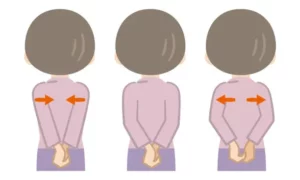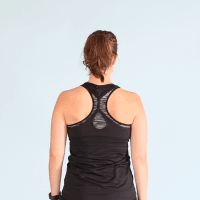Living with lupus can present a variety of challenges, with one of the most common and distressing symptoms being lupus shoulder pain. For individuals with systemic lupus erythematosus (SLE), this discomfort can significantly impact their quality of life. In this blog, we will delve into the causes, symptoms, and effective management strategies for lupus-related shoulder pain.
Contents
The Link Between Lupus and Shoulder Pain: Understanding The Connection
Lupus is an autoimmune disease that affects millions of people worldwide. While lupus can affect various organs and systems in the body, including the skin, joints, kidneys, and more, one frequently reported and particularly distressing symptom is shoulder pain.
The Causes of Shoulder Pain in Lupus:
- Inflammation: At the core of lupus lies an overactive immune system. In response to perceived threats, the immune system generates inflammation throughout the body, including the joints. This inflammation can affect the shoulders, leading to pain and discomfort.
- Lupus Arthritis: A subset of lupus patients experience a form of arthritis known as lupus arthritis. This condition primarily targets the joints, causing inflammation and pain. The shoulder joints are not immune to these effects.
- Tendonitis: Lupus-related inflammation can extend to the tendons, resulting in tendonitis. Tendonitis in the shoulders can cause pain and restrict movement.
- Muscle Weakness: Lupus can lead to muscle weakness and atrophy. Weakness in the muscles surrounding the shoulder joint can destabilize it, leading to pain and reduced functionality.
Symptoms of Lupus Shoulder Pain:
Lupus-related shoulder pain can manifest in various ways, and its severity can vary from person to person. Common symptoms include:
- Persistent Ache: Individuals with lupus often describe a persistent, dull ache in one or both shoulders. This ache may be constant or intermittent.
- Stiffness: Stiffness in the shoulder joint is a prevalent symptom. It can make simple tasks like combing hair or reaching for objects on high shelves challenging.
- Limited Range of Motion: Lupus shoulder pain often leads to a restricted range of motion. Raising the arm, reaching overhead, or even lifting objects can become difficult.
- Swelling and Redness: Inflammation in the shoulder joint can cause swelling and redness in the affected area.
Exercises To Relieve Lupus-Related Shoulder Pain
Engaging in targeted exercises can help individuals with lupus-related shoulder pain improve shoulder mobility, strengthen supporting muscles, and alleviate discomfort. Here are some exercises that may provide relief:
Pendulum Swing
- Stand next to a table or chair for support.
- Let your affected arm hang down.
- Gently swing your arm forward and backward, then side to side, in a pendulum-like motion.
- Start with small movements and gradually increase the range of motion.
- Perform this exercise for 1-2 minutes, several times a day.
Resistance Band Rows
- Sit on a chair with your feet flat on the floor.
- Secure a resistance band around a sturdy object in front of you.
- Hold one end of the band in each hand, palms facing each other.
- Then bend your elbows and pull the band toward your chest, squeezing your shoulder blades together.
- Slowly release the tension and return to the starting position.
- Perform 2-3 sets of 10-15 repetitions.
Wall Crawls
- Stand facing a wall, about an arm’s length away.
- Place your fingertips on the wall at shoulder height.
- Slowly “crawl” your fingers up the wall, reaching as high as you comfortably can.
- Hold for a few seconds at the highest point, then crawl your fingers back down.
- Repeat this movement 5-10 times.
Shoulder Blade Squeeze
- Sit or stand with your back straight.
- Squeeze your shoulder blades together as if you’re trying to pinch something between them.
- Hold the squeeze for 5-10 seconds, then release.
- Repeat this exercise 10-15 times.
Doorway Stretch
- Stand in a doorway with your feet together.
- Place your hands and forearms on each side of the doorway at shoulder height.
- Gently lean forward, allowing your chest to stretch.
- Hold the stretch for 20-30 seconds while taking deep breaths.
- Repeat the stretch a few times.
Scapular Retraction Exercise

- Sit or stand with your arms at your sides.
- Focus on squeezing your shoulder blades together without shrugging your shoulders.
- Hold the squeeze for 5-10 seconds.
- Release and repeat for 10-15 repetitions.
Deep Breathing Exercises
- Sit or lie down in a comfortable position.
- Take a slow, deep breath through your nose, expanding your chest and shoulders.
- After that, hold your breath for a few seconds.
- Exhale slowly through your mouth, releasing any tension in your shoulders.
- Repeat this deep breathing exercise for a few minutes to relax shoulder muscles.
Treatment Options For Lupus Shoulder Pain
Managing this pain involves a multifaceted approach, including medications and various therapies aimed at reducing inflammation, alleviating discomfort, and improving shoulder function. Here, we’ll delve into the treatment options available for lupus-related shoulder pain:
- Medications: Nonsteroidal Anti-Inflammatory Drugs (NSAIDs) such as ibuprofen or naproxen can help reduce pain and inflammation in the shoulder joints. In cases of more severe inflammation, corticosteroids may be prescribed. In some cases, biologic drugs may be recommended, especially if lupus-related arthritis is contributing to shoulder pain. Biologics target specific components of the immune system responsible for inflammation.
- Physical Therapy: Physical therapy plays a pivotal role in managing lupus shoulder pain by focusing on improving mobility, strengthening muscles, and alleviating discomfort. A physical therapist will design a personalized exercise program that may include range-of-motion exercises, strengthening exercises, posture improvement, or modalities such as heat packs or cold compresses.
- Occupational Therapy: Occupational therapists can provide valuable guidance on adapting daily activities to reduce shoulder strain. They may recommend assistive devices or techniques to make tasks like dressing, grooming, and cooking more manageable.
- Assistive Devices: Depending on the severity of shoulder pain and mobility limitations, assistive devices such as shoulder slings, braces, or even mobility aids like canes or wheelchairs may be prescribed to reduce stress on the shoulder joint and improve overall comfort.
- Lifestyle Modifications: Engaging in regular, low-impact exercises such as swimming or gentle yoga can promote overall well-being and help manage pain. Additionally, stress can exacerbate lupus symptoms, including shoulder pain. Stress reduction techniques such as meditation, deep breathing exercises, and mindfulness can be beneficial.
- Surgery: In severe cases where shoulder joint damage is significant, surgical intervention may be considered. Procedures like joint replacement or synovectomy (removal of the inflamed joint lining) are rare but may be necessary in extreme cases.
Tips For Managing Lupus-Related Shoulder Pain
Living with lupus-related shoulder pain can be challenging, but there are several strategies that can help individuals better manage their symptoms and improve their quality of life.
- Follow Your Treatment Plan: Adherence to your prescribed medications and therapies is essential. Work closely with your healthcare team, including rheumatologists and physical therapists, to ensure you are receiving the most appropriate treatment for your condition.
- Pain Management Techniques: Explore pain management techniques such as relaxation exercises, meditation, and deep breathing. These practices can help you cope with pain and reduce stress, which may exacerbate lupus symptoms.
- Maintain Good Posture: Practice proper posture to minimize strain on your shoulder joint. Sit and stand with your shoulders relaxed and your spine aligned.
- Listen to Your Body: Pay attention to your body’s signals. Rest when needed, and don’t push yourself too hard. Overexertion can worsen lupus symptoms, including shoulder pain.
- Stay Informed: Educate yourself about lupus and its management. Knowledge empowers you to make informed decisions about your treatment and lifestyle.
- Support Network: Lean on your support network, including friends and family, for emotional and practical support. Sharing your experiences with others who understand can be comforting.
- Regular Check-Ups: Keep up with regular check-ups and follow-ups with your healthcare team. Regular monitoring allows for early intervention and adjustments to your treatment plan if necessary.
- Stay Positive: Maintain a positive outlook. While lupus-related shoulder pain can be challenging, a positive attitude and a proactive approach to managing your condition can make a significant difference in your overall well-being.
Preventing Lupus Flares And Their Impact On Shoulder Pain
Lupus flares are periods when symptoms worsen or new symptoms develop. While it’s not always possible to entirely eliminate flares, certain strategies can help minimize their frequency and impact on shoulder pain:
- Medication Adherence: Follow your prescribed medication regimen diligently. Medications can help control lupus activity and also reduce the risk of flares. If you experience side effects or have concerns about your medications, discuss them with your rheumatologist to explore suitable alternatives.
- Adequate Rest: Prioritize rest and sleep. Fatigue and inadequate rest can contribute to lupus flares and increased shoulder pain. So, ensure you get enough sleep and listen to your body’s signals for rest.
- Balanced Diet: Adopt a well-balanced diet rich in fruits, vegetables, whole grains, and lean proteins. Omega-3 fatty acids found in fatty fish like salmon may have anti-inflammatory properties. Limit processed foods and excessive sugar intake.
- Hydration: Stay well-hydrated to support overall health and minimize potential triggers for lupus flares.
- Sun Protection: Ultraviolet (UV) rays from the sun can trigger lupus flares. Use broad-spectrum sunscreen, wear protective clothing, and avoid direct sun exposure during peak hours.
- Temperature Management: Extreme temperatures, both hot and cold, can be stressful for the body and potentially trigger flares. Therefore, it is important that you dress appropriately for the weather and use temperature control measures as needed.
- Infection Prevention: Take precautions to prevent infections, as they can trigger lupus flares. Practice good hand hygiene, stay up to date on vaccinations, and avoid close contact with individuals who are sick.
- Avoid Overexertion: Pace yourself and avoid overexertion. Pushing yourself too hard physically or mentally can contribute to flares.
- Environmental Triggers: Identify environmental triggers that may worsen lupus symptoms. This could include certain chemicals, allergens, or pollutants.
- Lupus Education: Understanding your condition empowers you to make informed decisions and recognize potential triggers.
Conclusion
In conclusion, managing lupus-related shoulder pain is a multifaceted journey that requires a combination of medical intervention, self-care, and lifestyle adjustments. While it may present challenges, it’s essential to stay informed, adhere to your treatment plan, and prioritize self-care strategies to minimize discomfort.
Working closely with your healthcare team, exploring medication options, and engaging in physical therapy can significantly improve your shoulder pain and overall quality of life.
If you’re experiencing Shoulder pain, physical therapy for shoulder pain at PhysioMantra can help: Book an online physical therapy session.








